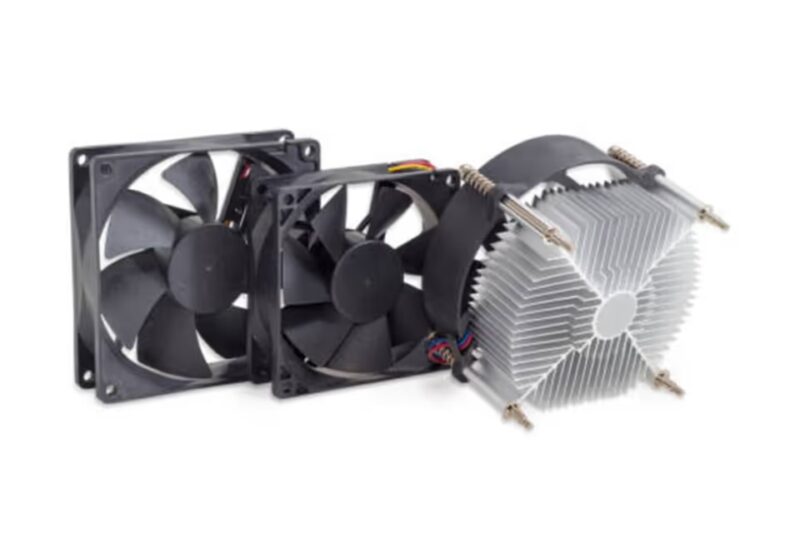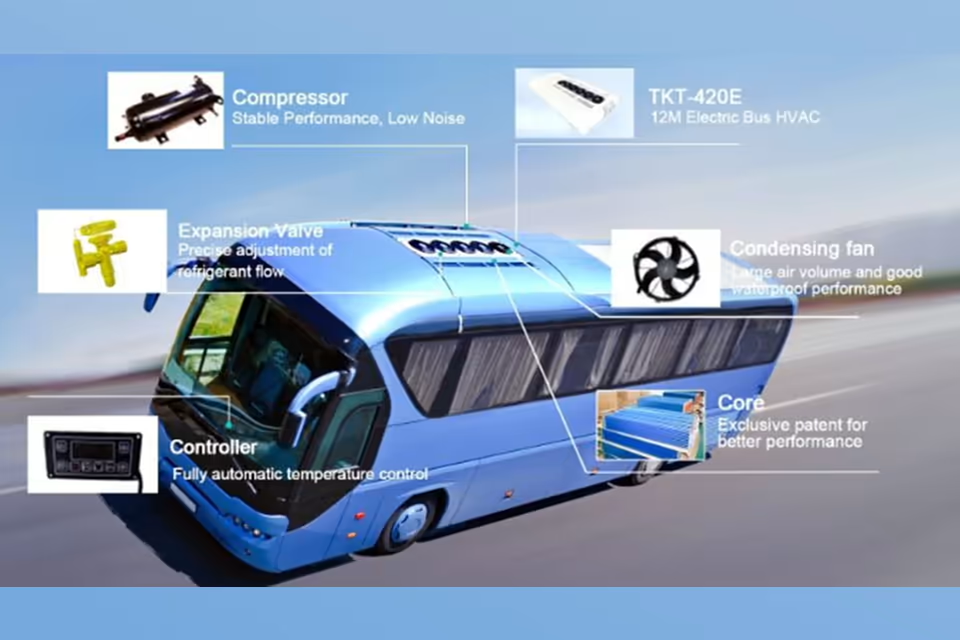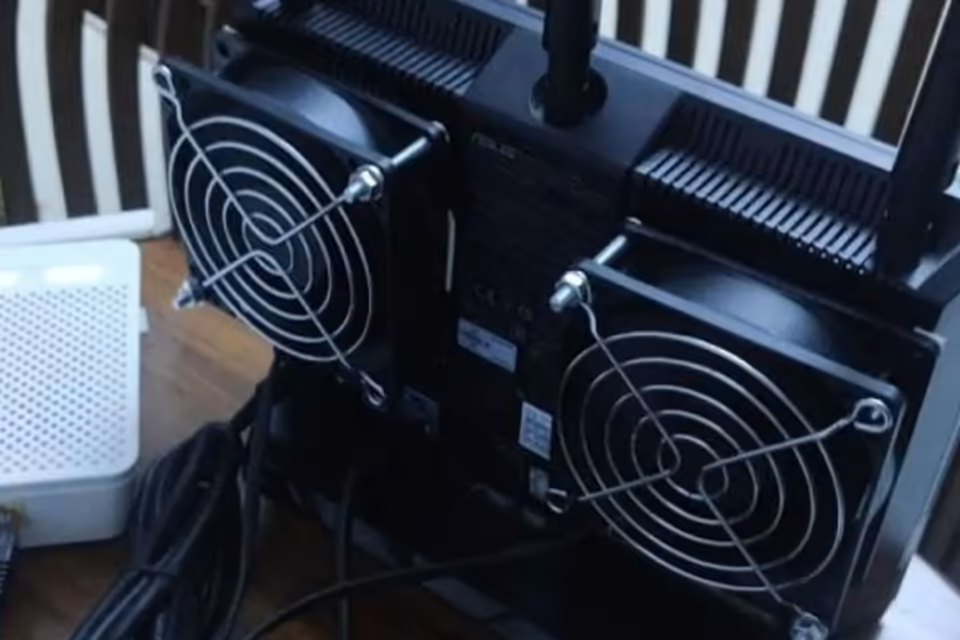From cooling the processors in our computers to providing a refreshing breeze on a summer day, fans are ubiquitous. Yet beneath the familiar whir of blades lies a fundamental distinction that significantly impacts their performance, efficiency, and application: the type of electric current that powers them.
The choice between an Alternating Current (AC) fan and a Direct Current (DC) fan is more than a technical minutia; it’s a decision that influences energy consumption, noise levels, control, and overall longevity.
This article delves into the intricate differences between AC and DC fans, exploring their core mechanics, comparing their key characteristics, and guiding you toward the optimal choice for your specific needs.
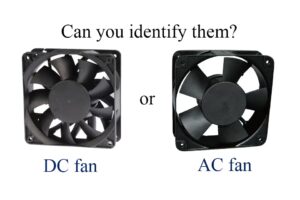
Understanding the Motors
The fundamental difference between AC and DC fans lies in their motors, the engines that convert electrical energy into the mechanical motion of the fan blades.
The Traditional Workhorse AC-Ventilatoren
AC fans are the veterans of the fan world, powered directly by the alternating current that flows from our wall outlets.
The motor in an AC fan is an induction motor. It operates on the principle of a rotating magnetic field generated by the alternating current passing through the stator’s windings. This rotating magnetic field induces a current in the rotor, creating an opposing magnetic field.
The interaction between these two fields causes the rotor to spin, driving the fan blades. The simplicity and reliability of this design have made AC fans a staple in countless applications for decades. They are known for their durability and straightforward operation.
The Modern Marvel of Efficiency DC Fans
DC fans, on the other hand, operate on direct current, a constant flow of electricity in one direction.
Since our standard electrical grid supplies AC power, DC fans incorporate a built-in transformer or adapter to convert the incoming AC power to DC before it reaches the motor. The motor in a DC fan is a brushless DC motor, a more technologically advanced design. This motor utilizes permanent magnets in the rotor and electromagnets in the stator.
An electronic circuit switches the polarity of the electromagnets, creating a magnetic field that interacts with the permanent magnets, causing the rotor to turn. This electronic commutation eliminates the need for brushes, which are found in some older DC motor designs and are a source of wear and noise.
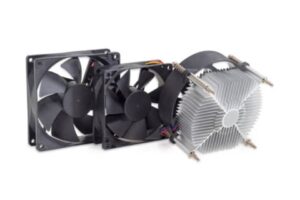
A Head-to-Head Comparison
The contrasting motor technologies of AC and DC fans give rise to a host of differences in their performance and characteristics.
Energie-Effizienz
Perhaps the most significant advantage of DC fans is their remarkable energy efficiency. DC fans can consume up to 70% less energy than their AC counterparts to produce the same airflow.
This drastic reduction in power consumption can lead to substantial savings on electricity bills, especially in applications where fans run for extended periods. The brushless design of DC motors minimizes energy loss due to friction and heat, contributing to their superior efficiency.
Control and Versatility
DC fans offer a level of control and versatility that AC fans typically cannot match. They often come with multiple speed settings, sometimes as many as six or more, allowing for precise adjustment of airflow. This granular control is achieved through electronic signals, enabling features like variable speed control based on temperature or other inputs.
In contrast, AC fans usually have a limited number of speed settings, often just three, and their speed is controlled by regulating the voltage, which can be less efficient.
Geräuschpegel
The brushless motors in DC fans operate with significantly less noise and vibration compared to AC motors. The absence of brushes eliminates the friction and electrical arcing that can contribute to noise in brushed motors.
This makes DC fans an ideal choice for environments where quiet operation is paramount, such as bedrooms, offices, and libraries. While not excessively loud, AC fans can produce a noticeable hum during operation.
Lifespan and Durability
The advanced motor technology of DC fans generally translates to a longer lifespan. The brushless design results in less wear and tear on internal components, reducing the likelihood of mechanical failure over time.
Furthermore, DC motors tend to generate less heat during operation, which also contributes to a longer motor life. AC fans, while known for their reliability, may have a shorter lifespan due to the wear on components like brushes in some motor types and the heat generated by their less efficient operation.
Cost
Historically, AC fans have been the more budget-friendly option upfront. Their simpler manufacturing process and widespread availability contribute to a lower initial purchase price. However, the tide is turning, and the price gap is narrowing.
While DC fans may have a higher initial cost, their significant energy savings often result in a lower total cost of ownership over the fan’s lifetime. The long-term savings on electricity bills can eventually offset the higher initial investment.
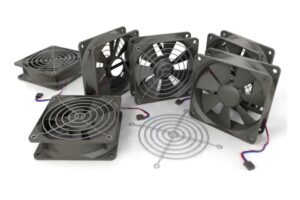
Common Applications
The distinct characteristics of AC and DC fans make them better suited for different applications.
AC-Ventilatoren
The robust and straightforward nature of AC fans makes them a popular choice for a wide range of applications, including:
- HVAC Systems: AC fans are commonly used in heating, ventilation, and air conditioning systems to move large volumes of air.
- Industrial Ventilation: In factories and workshops, AC fans are used for general ventilation, fume extraction, and cooling machinery.
- Refrigeration: AC axial fans are integral to commercial refrigeration units and cooling towers.
- Home Appliances: Many household appliances, such as refrigerators and ovens, utilize AC fans for cooling.
DC Fans
The energy efficiency, quiet operation, and precise control of DC fans have made them the preferred choice in a growing number of applications:
- Electronics Cooling: DC fans are essential for cooling computers, servers, and other electronic devices where quiet and efficient heat dissipation is critical.
- Modern Ceiling Fans: A growing number of residential ceiling fans now feature DC motors, offering quiet operation, multiple speed settings, and energy savings.
- Automotive Applications : DC fans are used for cooling engines, radiators, and in-cabin climate control systems.
- Medical Equipment: The reliability and quiet operation of DC fans make them suitable for use in various medical devices.
- Renewable Energy Systems: The low power consumption of DC fans makes them ideal for use in off-grid and solar-powered applications.
The Verdict
The choice between an AC and a DC fan ultimately hinges on the specific requirements of the application. For industrial settings where raw power and initial cost are primary concerns, the traditional AC fan remains a viable and reliable option.
However, for a growing number of applications, from personal electronics to modern home comfort, the advantages of DC technology are undeniable. The superior energy efficiency, quieter operation, and enhanced control of DC fans represent a significant leap forward in fan technology.
As the world increasingly prioritizes energy conservation and technological advancement, the quiet and efficient hum of the DC fan is poised to become the dominant sound of air circulation.

